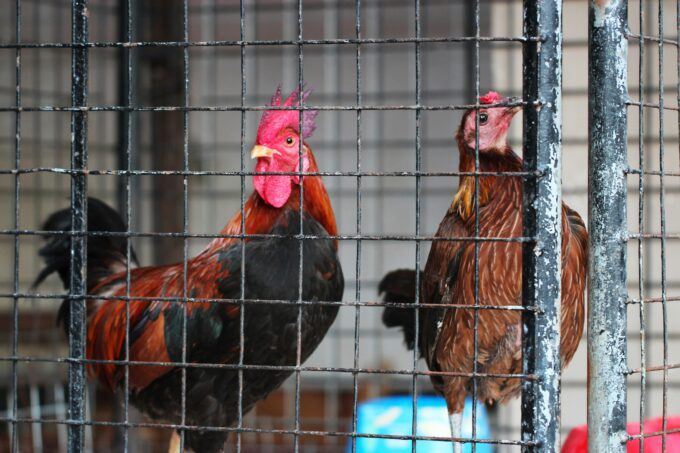Image by Esperanza Doronila.
The other day I rewatched Howard Hawk’s classic 1938 romantic comedy, Bringing Up Baby, for the first time in what was probably decades. Katharine Hepburn and Cary Grant star as an eccentric heiress and straightlaced paleontologist who come into possession of a leopard. Apparently, the beloved film was a box-office bomb.
Hepburn’s heiress, Susan Vance, is the niece of a wealthy philanthropist who Grant’s paleontologist, David Huxley, is trying to solicit a donation from. Vance’s brother sends the feline, Baby, who we later learn was intended for the philanthropist aunt, Elizabeth Random. May Robson’s character wanted the creature as a pet. Hijinks ensue.
Baby is played by a leopard named Nissa. The story of the fictional feline inadvertently provides a whirlwind tour of human exploitation of animals in its many different forms. For instance, this includes hunting, pet-keeping, food production, zoo-keeping and traveling entertainment, among other things.
Vance’s brother caught Baby while on a hunting trip to Brazil. Her aunt’s companion, Major Horace Applegate, played by Charles Ruggles, is a hunter as well. The contrast between his daring tales and cowardly behavior when faced with an actual leopard provides some of the film’s best comedy.
Of course, Baby’s fundamental unsuitability as a pet is the driving force of the plot. Large, wild predators are uniquely ill-fitted to being forced into a domestic relationship with humans. However, I don’t think more traditional pet ownership is beneficial to animals when considered as a whole.
The practice puts cats, dogs, and others in a position of perilous dependence on their human masters. Most notably, vast surpluses of healthy creatures are ‘euthanized’ due to a lack of homes. Even in a domestic context, pets can face horrific abuse and more everyday examples of neglect.
Baby encounters the meat industry when Vance, Huxley and the leopard crash into a poultry truck. Cages packed with chickens, ducks, and swans spill across the road. Baby eats some of these, so Huxley goes to a store and purchases 30 pounds of steak, which he explains will be eaten raw, much to the butcher’s confusion.
Interestingly, when Huxley suggests they give Baby to a zoo, Vance refuses. She says this is a cruel idea as the leopard would be miserable. The sentiment is undercut later in the movie, when Vance allows Huxley to call the zoo, but this seems borne out of desperation, rather than any kind of change of heart.
Finally, the human characters confuse Baby with a performing leopard from a traveling circus, also played by Nissa. This other feline character represents animal resistance to human control. The creature has apparently mauled her trainer and is destined to be killed with gas when Vance lets her out of a cage.
Obviously, Nissa was a performing leopard as well. Her trainer stood off-screen with a whip throughout production in case she misbehaved. But the animal ‘performance’ which I found most disturbing was that of the birds whose cages are knocked into the street. As far as I can tell, that was real.
Thankfully, I believe a similar film would be made differently today, if only to prevent harm to the human stars. Grant was reportedly terrified of working with Nissa. Hepburn was more fearless with the leopard, but still had a number of close calls. Presumably, Baby would be a computer-generated character now.
